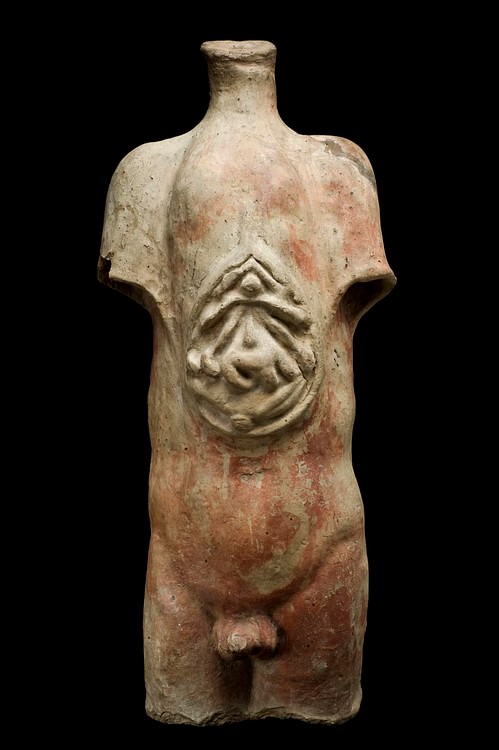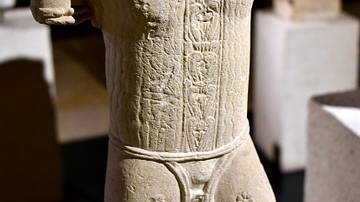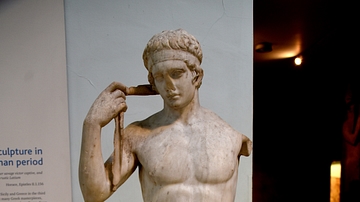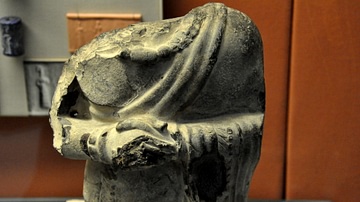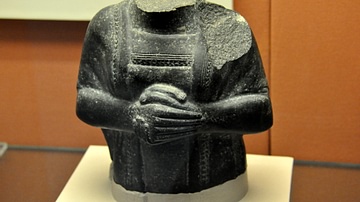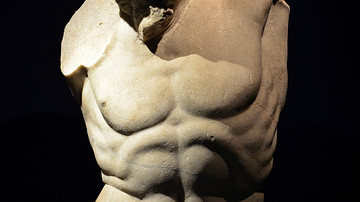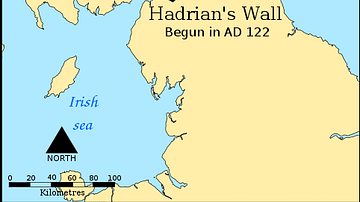Illustration
Ancient Romans often dedicated votive objects to specific gods associated with healing in the hopes of recovery. These objects were in the form or representation of the affected body part and would be left at the temple of a god.
This torso was created in the image of a man's torso, dissected so that the internal organs could be seen, and was probably dedicated to heal someone suffering from internal disease or injury. Made c. 200 BCE - 200 CE, most likely in Isola Farnese, Italy. The piece is now part of the collection of the Science Museum in London, UK.
Cite This Work
APA Style
Museum, S. (2019, April 19). Roman Votive Male Torso, from Isola Farnese. World History Encyclopedia. Retrieved from https://www.worldhistory.org/image/10476/roman-votive-male-torso-from-isola-farnese/
Chicago Style
Museum, Science. "Roman Votive Male Torso, from Isola Farnese." World History Encyclopedia. Last modified April 19, 2019. https://www.worldhistory.org/image/10476/roman-votive-male-torso-from-isola-farnese/.
MLA Style
Museum, Science. "Roman Votive Male Torso, from Isola Farnese." World History Encyclopedia. World History Encyclopedia, 19 Apr 2019. Web. 31 Oct 2024.
